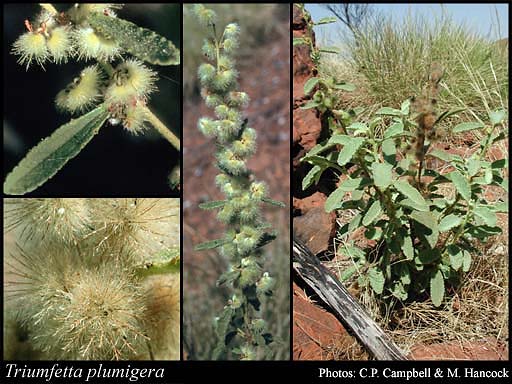- Reference
- Fragm. 1:69 (1859)
- Conservation Code
- Not threatened
- Naturalised Status
- Native to Western Australia
- Name Status
- Current
Erect, often spindly shrub, 0.3-1.6 m high. Fl. yellow, Feb to Aug. Sandy soils, skeletal soils over sandstone or quartzite. Rocky grounds, ridges, hills.

Scientific Description
Shrub, with hairy stems. Leaves 30-75 mm long, 10-30 mm wide, not lobed; margins crenate; hairy, with stellate hairswith scales absent, Sessile glands absent; stipules present but early deciduous (only visible on youngest leaves). Perianth clearly of two whorls (calyx and corolla), the corolla obvious and prominent. Pedicel present, 1-2.5 mm long; indumentum present, with stellate hairs present, with scales absent. Epicalyx (extra segments or 'bracteoles' immediately below the calyx) absent. Calyx 3.2-6 mm long, the lobes fused less than half their length, Sessile glands absent, simple hairs (without tubercle bases) absent, stellate hairs present, tubercle-based simple hairs absent, gland-tipped hairs absent, scales absent, Terminal appendages present, number of ribs absent. Corolla yellow, 4-4.3 mm long, glabrous. Indumentum (outside) Sessile glands absent. Stamens many, free and inserted at the base of the ovary; filaments present, 2.2-4 mm long; anthers 0-0.3 mm long, indumentum absent (anthers glabrous). Staminodes absent, appendages absent. Ovary hairs or scales present, simple hairs absent, stellate hairs present, gland-tipped hairs absent; style 1, with a lobed or capitate stigma, 4-4.5 mm long, with one style branches or lobes, mostly glabrous, wing absent. Fruits indehiscent and not splitting into sections (drupes), length-width ratio more or less as long as wide, hairs or scales present, simple hairs (without tubercle bases) present, stellate hairs present, Sessile glands absent, tubercle-based simple hairs absent, gland-tipped hairs absent, scales absent; apex rounded; prickles absent (except perhaps a terminal awn); terminal awns or spines absent; calyx persistent to mature fruit, not accrescent. Flowering time February, March, April, May, June, July or August. Distribution Botanical Province Northern or Eremaean, IBRA Bioregion Great Sandy Desert, Tanami, Pilbara, North Kimberley, Victoria Bonaparte, Central Kimberley, Dampierland and Ord-Victorian-Plain.
Distribution
- IBRA Regions
- Central Kimberley, Dampierland, Great Sandy Desert, Northern Kimberley, Ord Victoria Plain, Pilbara, Tanami, Victoria Bonaparte.
- IBRA Subregions
- Berkeley, Chichester, Fitzroy Trough, Hart, Keep, McLarty, Mitchell, Mount Eliza, Pentecost, Pindanland, Purnululu, South Kimberley Interzone, Tanami Desert.
- Local Government Areas (LGAs)
- Ashburton, Broome, Derby-West Kimberley, East Pilbara, Halls Creek, Wyndham-East Kimberley.